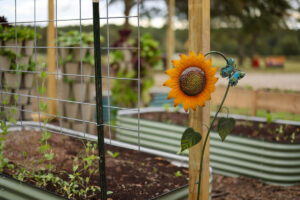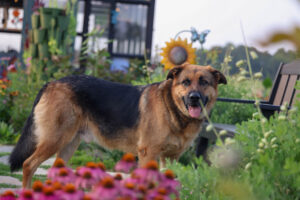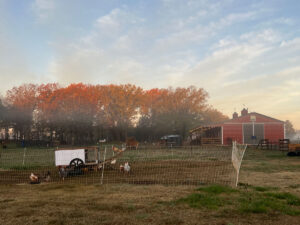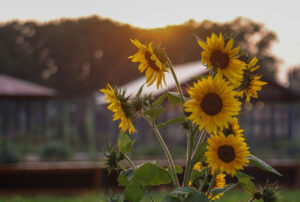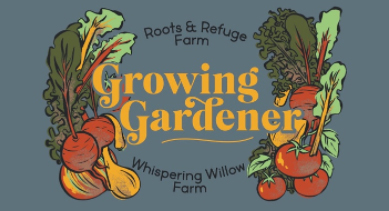Learn how to build pig shelters on a budget! We made a moveable pigpen out of repurposed materials and hog panels so our hogs could till up the in-ground garden for a season. This helped reduce the overall cost of raising the pigs and kept the pigs healthy and safe.
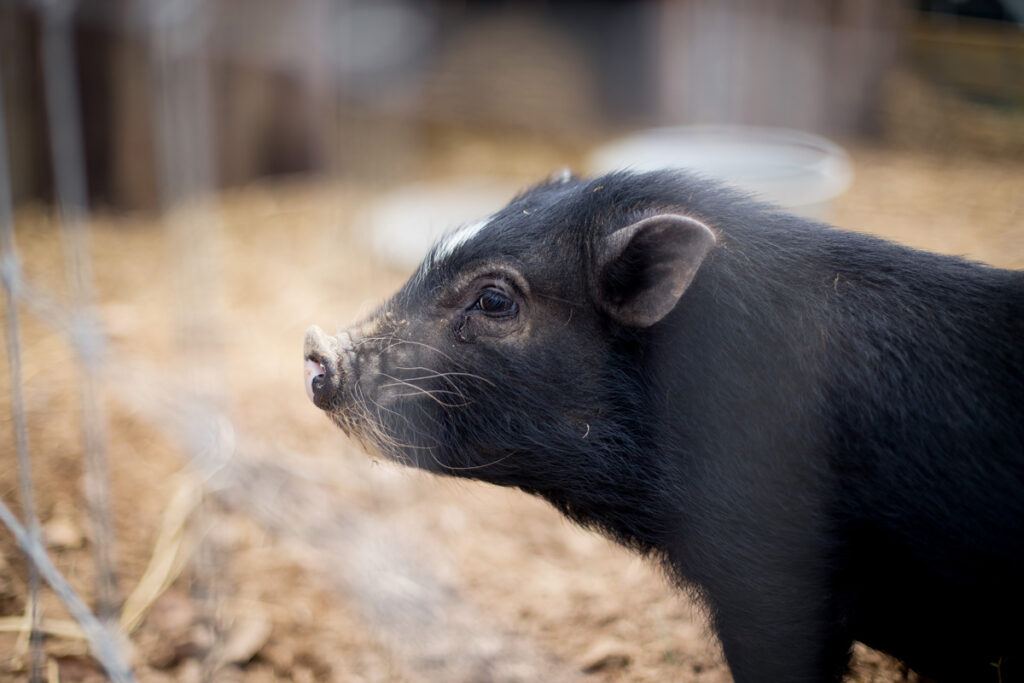
We love raising meat on our homestead, especially heritage breeds. But there is definitely an initial investment when getting started and finding ways to cut the costs (like saving money on feed costs) can be very helpful.
Why Pig Shelters Are Important
One of the most important aspects of raising pigs is adequate shelter. Pig shelters should provide the following:
- Protection from the sun, rain, and the cold.
- Safe and dry shelters to help keep your pigs from stress (stress lowers reproduction and the quality of the meat).
- Affordable pig shelters help keep down the cost of raising pigs.
We made a moveable pig pen out of repurposed materials and hog panels so our hogs could till up the in-ground garden for a season.
What Do Pigs Need From a Shelter
Just like other animals, pigs need a clean, dry shelter that protects them from the weather. Add that to a pig pen with ample room to root and roam and you will have happy hogs.
Pigs are prone to get pneumonia and a well-ventilated, dry shelter without drafts will make all the difference in your hog’s health.
If you live in an area with extremely cold winters or heavy rains you will want a floor or platform in your shelter to keep your pig warm and off of the damp ground.
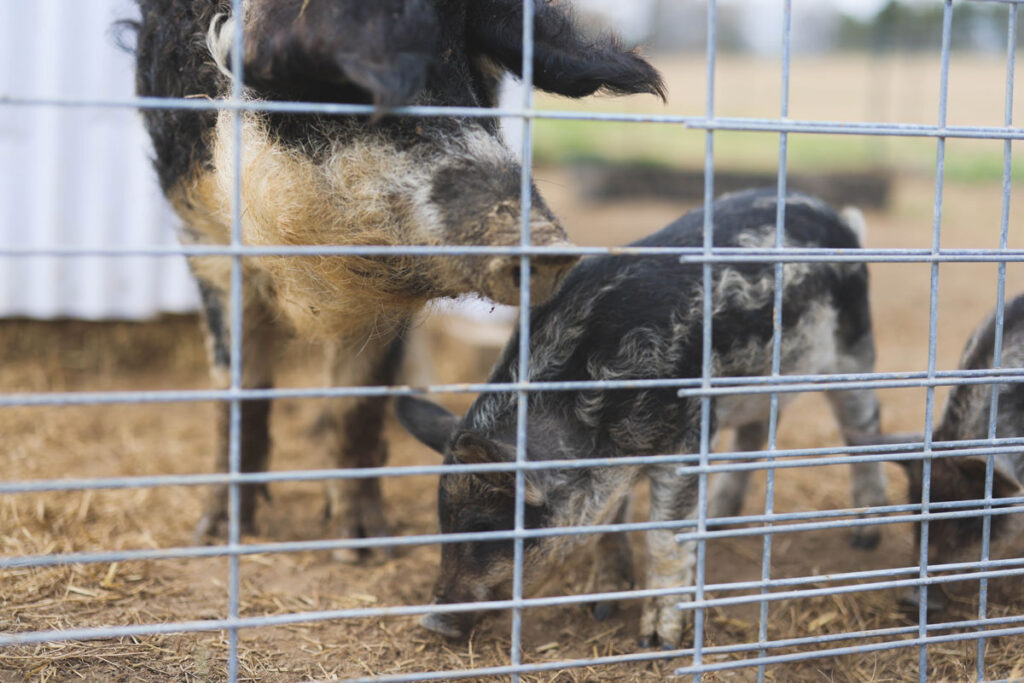
Budget-Friendly Pig Shelter
Raising pigs ourselves allows us to ethically source the meat we eat, and budget-friendly pig shelters help us keep our costs down.
For this project, we used repurposed IBCs (intermediate bulk containers) which are also called pallet tanks to make our shelters. IBCs are industrial-grade reusable containers that are usually used for storing or transporting large amounts of liquids. I was able to secure my pallet tanks for free from a local company that was going to trash them.
When the plastic containers get cracks in them, they usually end up in the dump. Some places do sell them, but I recommend first asking around at local food processing plants or industrial businesses near you. Ask what was stored in them when you are looking for free IBCs. You don’t want IBCs that were used to store anything toxic. The ones we got had a non-toxic, plant-based cleaner in them.
IBCs are lightweight and mobile. This makes them an ideal pig shelter because they are solid yet easy to move. I was able to drag them back to where our pigs are by myself.
When we move our pig pens around, now I can easily move the shelters with the pens. This is not my original idea and I’m sure not the first person to do this, but we wanted to share how we did this because it was a great solution for us when building pig shelters on a budget.
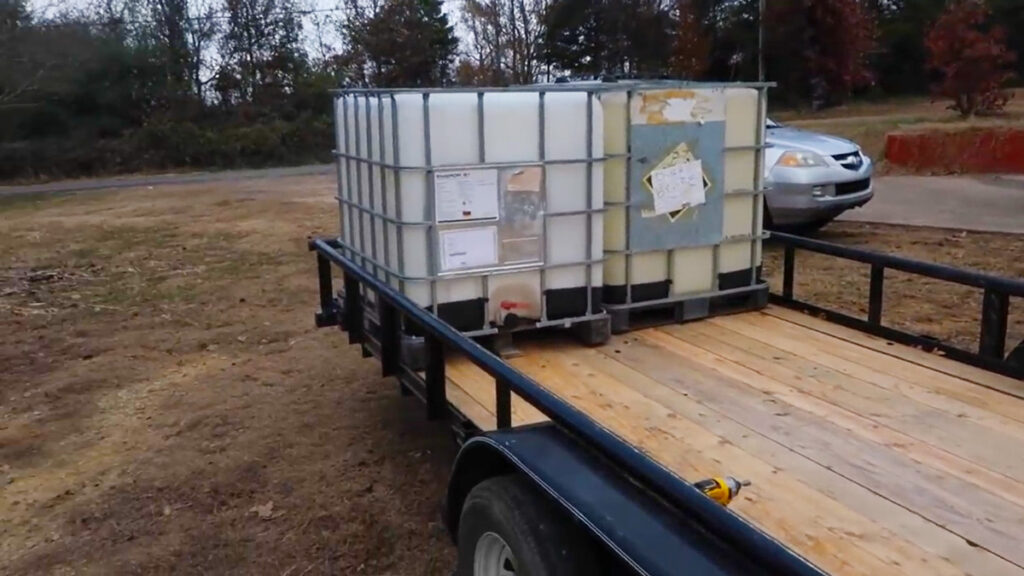
Making a Pig Shelter Out of IBCs
Supplies and Tools Needed:
- IBC (Intermediate Bulk Container)
- Drill – to remove the base of the IBC
- Grinder or saw – with a suitable blade for cutting plastic (I used a diamond tooth carbide blade but most saw blades will work)
- Soap and water – to clean the IBC
- Two carabiners – to hold the gate opening
- Two hose clamps – to act as hinges in your fencing.
- Ratcheting strap – to keep the shelter secured to the fencing.
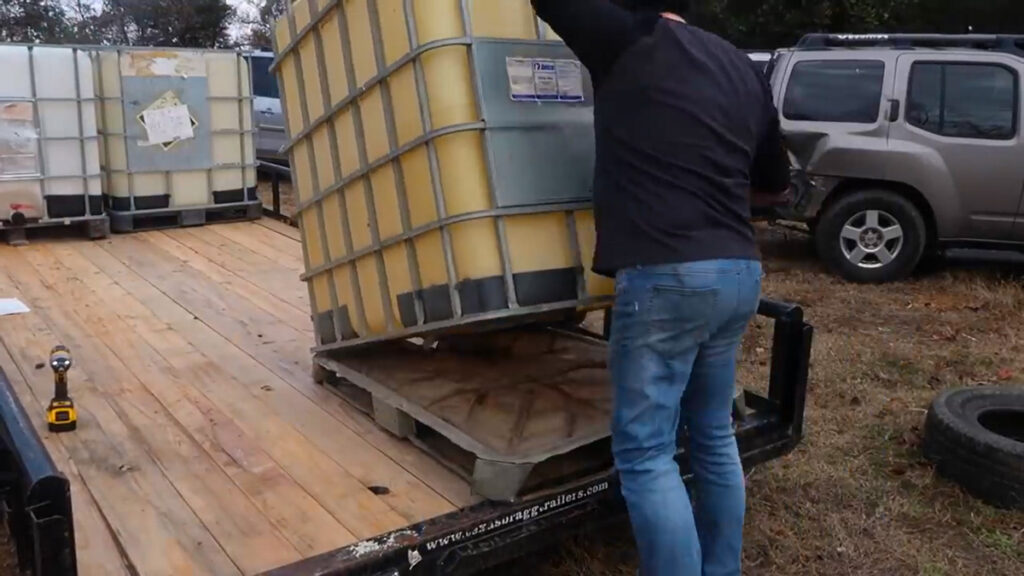
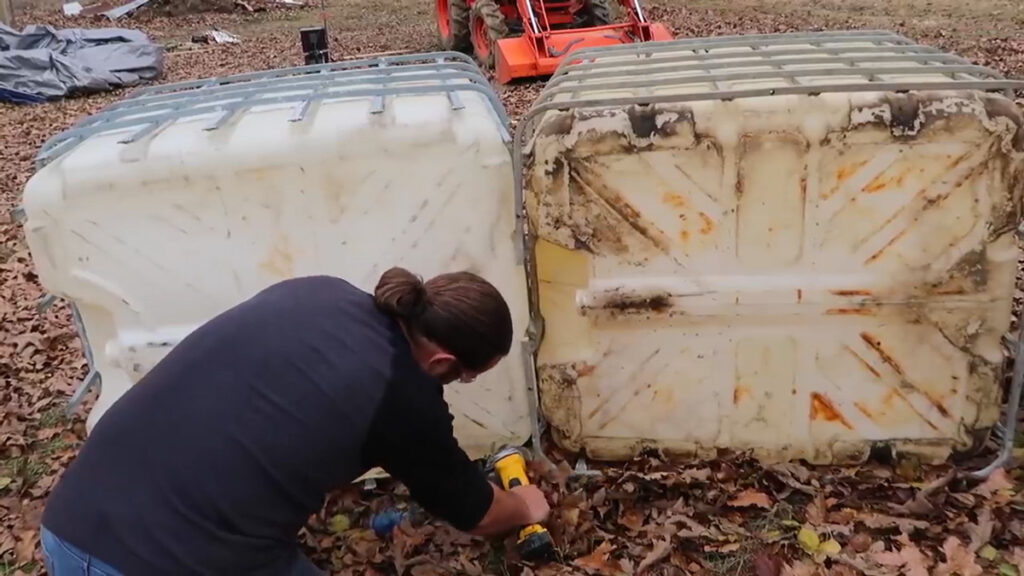
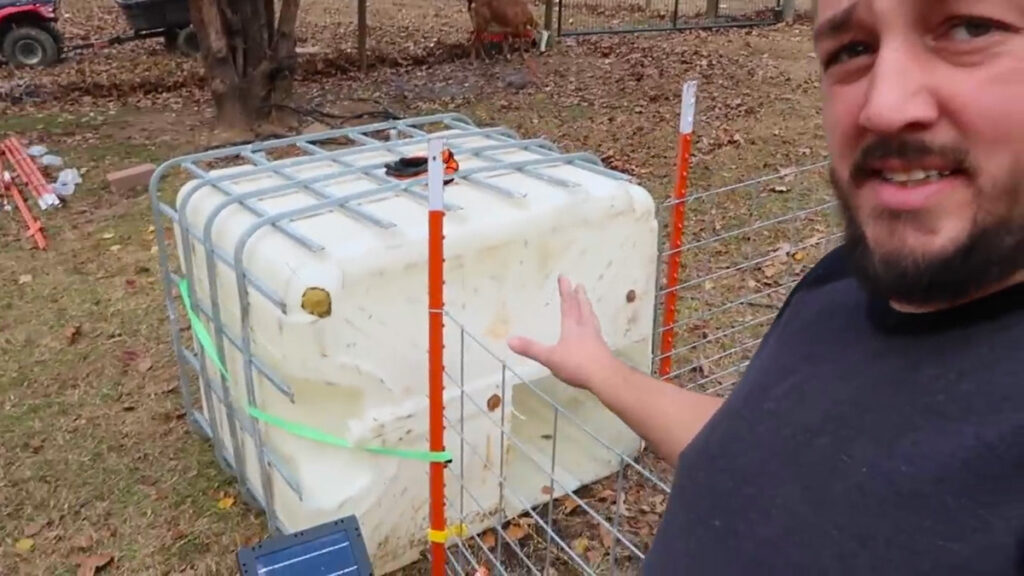
How to Build a Pig Shelter
- Using a drill, remove the screws that hold on the base of the IBC.
- Remove the base. It should lift free now that it is unscrewed. We will be turning these on their sides so we do not need the base.
- Cut a hole in the bottom of the IBC. Laying the IBC on its side with the bottom facing you, cut out a section to make an opening for the pigs to go in and out of. The opening should be about half the width of the bottom of the IBC and just tall enough for your pigs to walk through. I made the door too short for my pigs the first time and had to make it about 4” taller than what you see in the photo.
- Clean out the inside of the IBC. I scrubbed the inside with soap and rinsed it out with a hose until it was completely clear water coming out. Let it dry.
- Build a door in your pig pen where you want to attach the pig shelter. Our pig pen is built out of hog panels and T-posts so I used carabiners and hose clamps (the hose clamps act as hinges) to put a door in the hog panel fencing. The door should be wider than the hole you cut in your IBC, but not wider than the IBC itself.
- Position the IBC in the open door of the pigpen. Line up the door hole in the IBC with the door you made in your pig pen and butt it up against the sides of the pen.
- Secure the IBC shelter to the fencing with a ratcheting strap. I ran the ratcheting strap from one T-post, around the back of the IBC, and secured it to a T-post on the other side. The ratcheting strap should hold the shelter in place.
- Add fresh straw inside the IBC shelter to keep your pigs warm and comfortable.
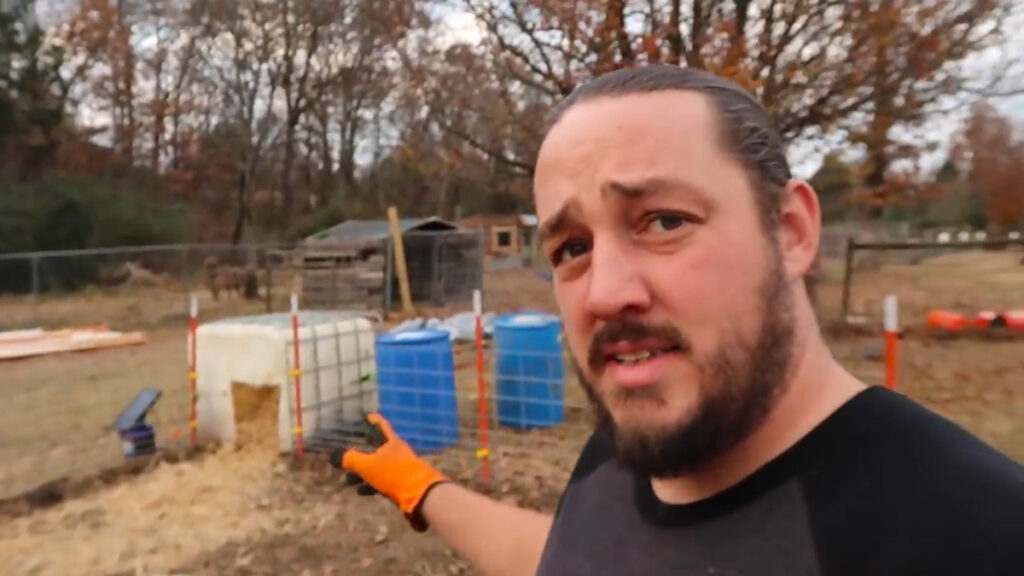
I know this photo is a little blurry, but you can see the finished pig shelter with plenty of hay to help keep the pigs warm, insulated, and dry.
You now know how to build a pig shelter! I’m sure there are many other ways that people have set up housing and shelter for their pigs, but I am really pleased with how this project turned out.
Thanks for hanging out and following along with my project. I bless you, until next time.
More About Homesteading On a Budget
- Raising Meat On the Homestead (Answers to Frequently Asked Questions)
- The Best & Easiest Method of Bottle Feeding Goats
- Breeding Animals 101: A Resource for the Homesteader
- Heritage Breeds For The Homestead
- DIY Structure to Keep Feed Hay Dry
- How to Milk a Goat
- The Best Chicken Breeds for YOU
- Why Did My Chickens Stop Laying Eggs?


